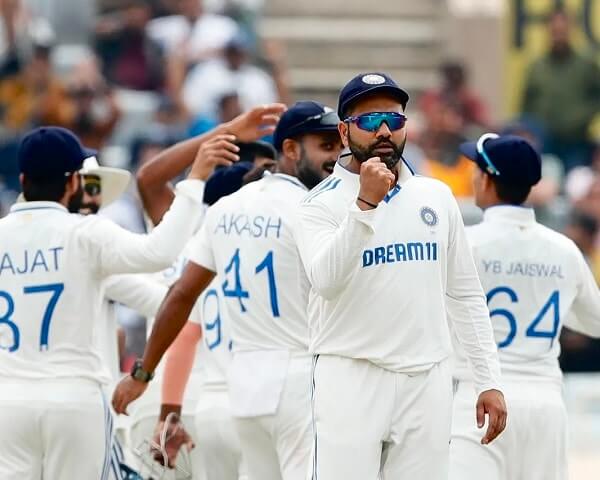This summer heralds what will be a first in many cricket fans’ lifetimes: a five-Test Border-Gavaskar Trophy series between Australia and India.
It’s been 32 years since the last five-match Test series between the two nations, and the move from the four- (and occasionally two-) Test format demonstrates the value placed on the rivalry by fans, broadcasters and administrators alike.
The extended series will kick off in Perth, with tests to follow in Adelaide (day/night) and Brisbane, and Melbourne and Sydney retaining their traditional Boxing Day and New Years Tests.

To some, the announcement will be a bittersweet pill. After all, unless you’re Australia, India or England, Test cricket appears destined to continue dying a slow death without drastic intervention.
Take, for example, South Africa’s scarcely recognisable squad for its recent Test series in New Zealand, a third-string side featuring seven uncapped players and a new captain, with most first-choice players unavailable for selection given the overlapping SA20 competition. In this milieu, longer Test series are a luxury that most nations – and broadcasters – cannot afford.
But it’s indisputable that India v Australia is the jewel in Test cricket’s slipping crown. While the Ashes may carry the weight of history, from both a commercial and cricketing perspective, the Border-Gavaskar Trophy leaves the Ashes dead and buried.

Even culturally, the new rivalry has in some quarters surpassed the old, with Australian greats such as Steve Smith and David Warner admitting that winning a Test series in India would mean more than an Ashes series victory.
The change – one that would have been unfathomable at the turn of the century – is a product of two factors.
First, the competitiveness of the contest. Since the inaugural Border-Gavaskar Trophy in 1995-96, India boasts a 24-20 record against Australia, at a ratio of 1.20. It’s more than twice as good as the next-most competitive teams against the Australian juggernaut, South Africa (0.565) and England (0.537). No matter the sport, a close contest generates the closest interest.
Secondly, it’s not just how many are watching, but who is watching. It’s no secret that performances against India get you noticed, regardless of the format. The performances of Warner, Cummins, Smith and Starc in the longest format have contributed in no small part to their broader reputation in the subcontinent – and in turn, each of their lucrative IPL contracts over the years.

The BCCI has, of course, latched onto the expanded series as a testament of its dedication to Test cricket, with Honorary Secretary Jay Shah remarking that the extended format “underscores [the BCCI’s] collective commitment to nurturing and elevating Test cricket’s significance” and its joint mission with Cricket Australia to “amplify the essence of Test cricket and uphold its legacy”.
A cynic would view these words with more than a little scepticism, for obvious reasons: if the BCCI was so steadfastly committed to “amplifying the essence” of Test cricket, it is entirely within the BCCI’s control to do so, as the financial powerhouse of the game.
The BCCI has certainly demonstrated India’s commitment to Test cricket; this is evident not only in the expanded Border-Gavaskar Trophy, but also the BCCI’s recent decision not to award central contracts to former rising stars Shreyas Iyer and Ishan Kishan, after the duo refused to take the field for their Ranji Trophy teams. There’s also no questioning the commitment of India’s biggest stars – Kohli, Sharma, Bumrah – to the longest format.

But Test cricket is bigger than the Big Three, and it’s easy for multi-millionaires like Kohli to commit to the format when their livelihoods are not at risk. It is unfair to expect players from other nations to simply “put the country first” when they could be earning life-changing salaries for significantly less work.
There are several tools at the BCCI’s disposal which would go some way towards redressing the slide of the longest format for other nations, whether through carving out a dedicated Test cricket window (or a shortened IPL window), subsidising match payments for players representing countries other than the Big Three, or guaranteeing each Test nation a minimum number of tests in each cycle.
It’s arguable that it is not solely the BCCI’s responsibility to act, with the vast majority of the its revenues attributable to the IPL, rather than ICC tournaments. But the BCCI profits in no small part from the participation in the IPL of players from other Test-playing nations, and it is primarily Test cricket which suffers in the process.
A five-Test Border-Gavaskar Trophy is certainly an exciting development for fans, but one can only hope it’s not the latest example of the ICC fiddling while Rome burns.
FACT BOX: Border-Gavaskar Trophy this century
| Host | Series | Result |
| India | 2000/01 | India 2-1 |
| Australia | 2003/04 | Draw 1-1 |
| India | 2004/05 | Australia 2-1 |
| Australia | 2007/08 | Australia 2-1 |
| India | 2008/09 | India 2-0 |
| India | 2010/11 | India 2-0 |
| Australia | 2011/12 | Australia 4-0 |
| India | 2012/13 | India 4-0 |
| Australia | 2014/15 | Australia 2-0 |
| India | 2016/17 | India 2-1 |
| Australia | 2018/19 | India 2-1 |
| Australia | 2020/21 | India 2-1 |
| India | 2022/23 | India 2-1 |
READ ALSO: ICC World Cup, or BCCI World Cup?




